The Beyoncé concert was amazing. The SoFi sound was awful

My girl dinner of choice is spicy Korean tuna on crackers. I’m Carolina A. Miranda, art and design columnist at the Los Angeles Times, and I’m here with the spice and the essential arts news:
A modest proposal
Did I go to Beyoncé? Yes! Did I wear silver? You know I did.
The concert was the first musical event I’ve attended at SoFi Stadium. I’ve been to sporting events (Rams vs. 49ers) at the stadium and concerts (a fantastic one by Rosalía) at the YouTube Theatre, the adjacent 6,000-seat indoor venue. But I had yet to see a show inside the stadium itself.

Now I’ve been — and all I have to say is that the experience was not optimal. And that has nothing to do with Beyoncé and everything to do with sound and the odyssey of getting in and out of the stadium.
Let’s start with the acoustics: They suck. Tinny. Echo-y. I could frequently hear the shouting of the people next to me better than anything else. Any stage banter was lost to echoes. When Diana Ross (!!!) came out I could barely hear what she and Beyoncé were saying to each other.
Sporting arenas generally aren’t known for the quality of their sound. But having been to a Blackpink show at Dodger Stadium just a week prior, I was stunned by the difference. At Dodger Stadium I was able to clearly hear the singers throughout the performance (despite the unhinged screaming of the teenagers around me). SoFi, however, was another story.
Beyoncé put on a flawless show. She belted the power ballads to the rafters; she kept the crowd on their feet for the dance numbers. The sightlines in the stadium are terrific, so even though I was in the upper decks, I could still see the stage and the video screens clearly. But the all-powerful Queen Bey cannot make up for the crappy acoustics.
I reached out to the stadium to see if there are any plans to work on their sound issues, but did not hear back by deadline. (Keep you posted.)
Make the most of L.A.
Get our guide to events and happenings in the SoCal arts scene. In your inbox once a week.
You may occasionally receive promotional content from the Los Angeles Times.
This brings me to the valiant act of getting in and out of SoFi — something I wrote about when I reviewed the building early last year. Parking is wildly expensive, traffic is apocalyptic and even making it to the site is like a mass Darwinian experiment. As I wrote last year, a lot of this has to do with a lack of planning — generally, but also around public transit. And as I also wrote, it’s only going to get worse once that Clippers arena is open. (Good luck leaving your house if you’re a resident of Inglewood.)
For the Beyoncé concert, I opted for public transit: the Metro K Line to Downtown Inglewood followed by an easy transfer to Metro’s 212 bus, whose route follows Prairie Ave past SoFi Stadium. It was simple. Sort of.
Because of the nightmare traffic, buses that would ordinarily deposit riders right in front of the stadium instead run one major boulevard to the west on La Brea. From there, it’s a 10-minute walk to the place — which is fine if you’re able-bodied, but not optimal given that, in any normal city, buses should be able to take passengers directly to a major venue.
On the return, we figured we’d catch Metro’s 210 bus north on Crenshaw Boulevard to the Expo-Crenshaw Station, where we had left our car — saving us a transfer. That idea was worse. The bus was stuck in stadium traffic. According to Google Maps, it was going to be almost 40 minutes before we saw it. We ended up walking north on Crenshaw until we were out of the scrum and called a Lyft.
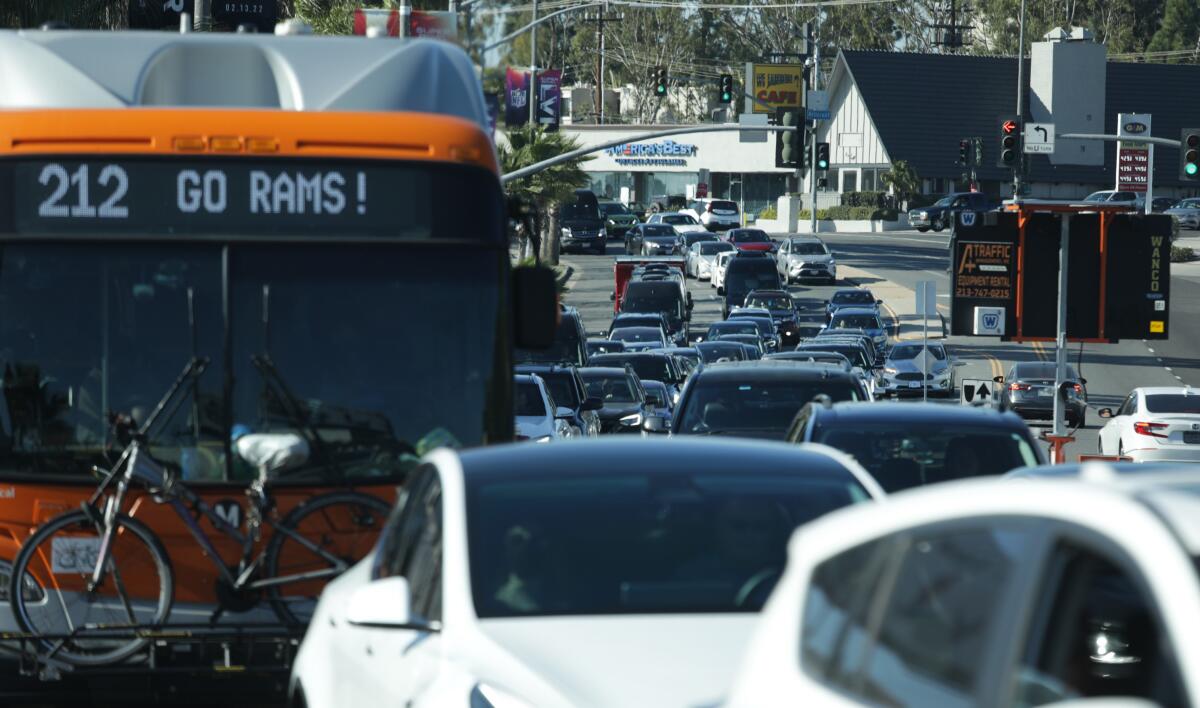
On NFL game days, Metro runs a shuttle in a dedicated lane from the Hawthorne/Lennox Station of the C Line (much like the Dodger shuttle from Union Station). But this does little good if you’re coming from the north or visiting on a non-game day. The city is at work on a massive transit connector project that would link downtown Inglewood’s Metro rail stop with the stadium. But that is years off and will force more than 40 local businesses to relocate (another disaster).
Until then, I would like to make a modest proposal: the City of Inglewood could prioritize the use of public transit by creating dedicated bus lanes around the stadium — at all hours, not just on game day.
SoFi’s problem isn’t parking. It’s too many cars converging on a single location at one time. Make public transit easier to use and you might just pry people out of their automobiles and into the bus. And the bus was pretty great: An impromptu Beyoncé fashion show with everyone decked out in shimmering silver.
In and out of the galleries
MOCA has reinstalled the permanent collection galleries. One of the new installations, writes Times art critic Christopher Knight, takes an unusual but engaging route; its organizing principal is “social relationships among artists, rather than styles or subjects found in their art.” Galleries instead revolve around a studio neighborhood, a collection and a school (hello, CalArts). “There’s a modest, nonhierarchical quality to the presentation,” he writes, “and it avoids the usual corny ruminations on L.A. aesthetic clichés like sunshine-and-noir or the Dream Factory.”
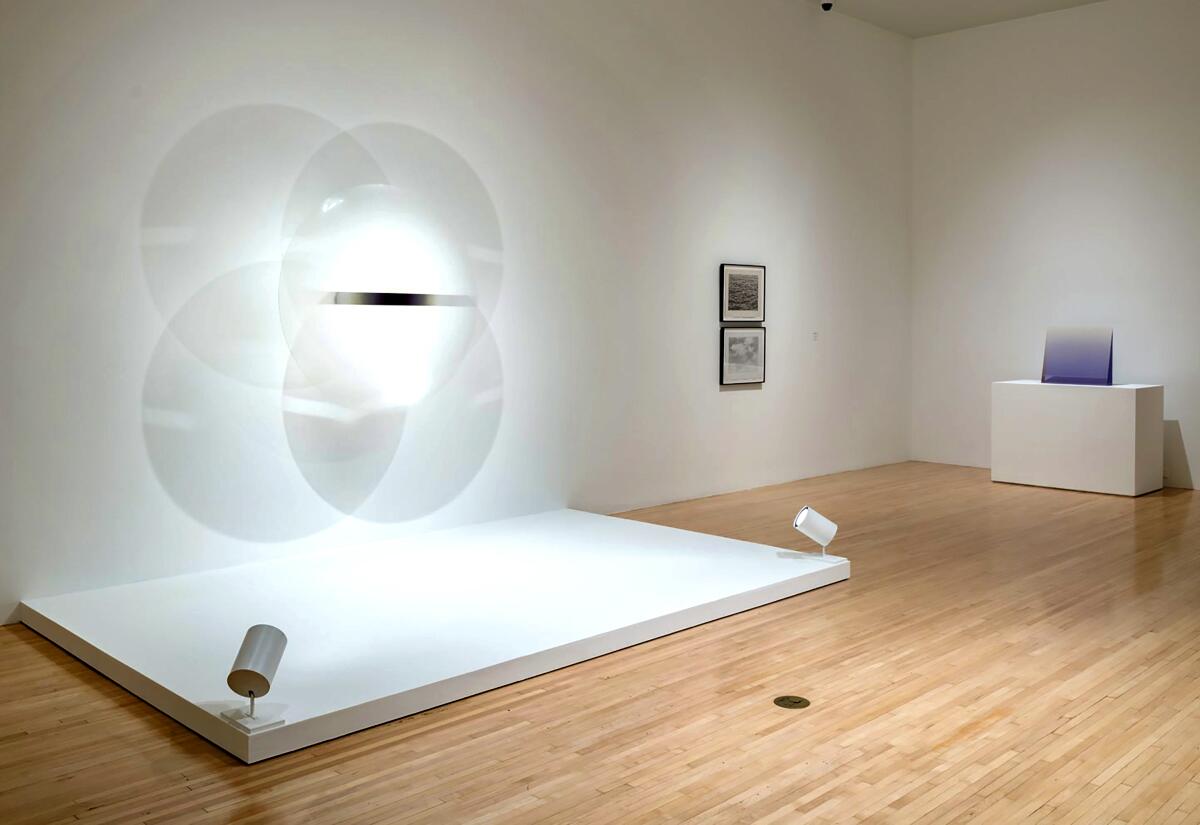
Carmen Argote’s solo show at the ICA LA, “I won’t abandon you, I see you, we are safe” concludes this weekend. Contributor Jennifer Piejko reports on the ways in which the exhibition explores familial bonds across generations. The show has featured almost daily visits from the artist, who shows up to engage the public and add notes on the walls in colored pencil. “Tending to the show also means having conversations with people,” she tells Piejko.
At Charlie James Gallery in Chinatown, Elmer Guevara captures strains of his and his family’s stories in mixed media works that blend his experiences with Ursula K. Le Guin’s theories about containers. “House Money,” as the show is titled, captures the tension of “violence in the ‘90s and early 2000s era” and the “very joyful times” he had around his home, Guevara tells contributor Eva Recinos. It also hints, in striking ways, at the violence of the Salvadoran civil war that led his parents to immigrate to the U.S.
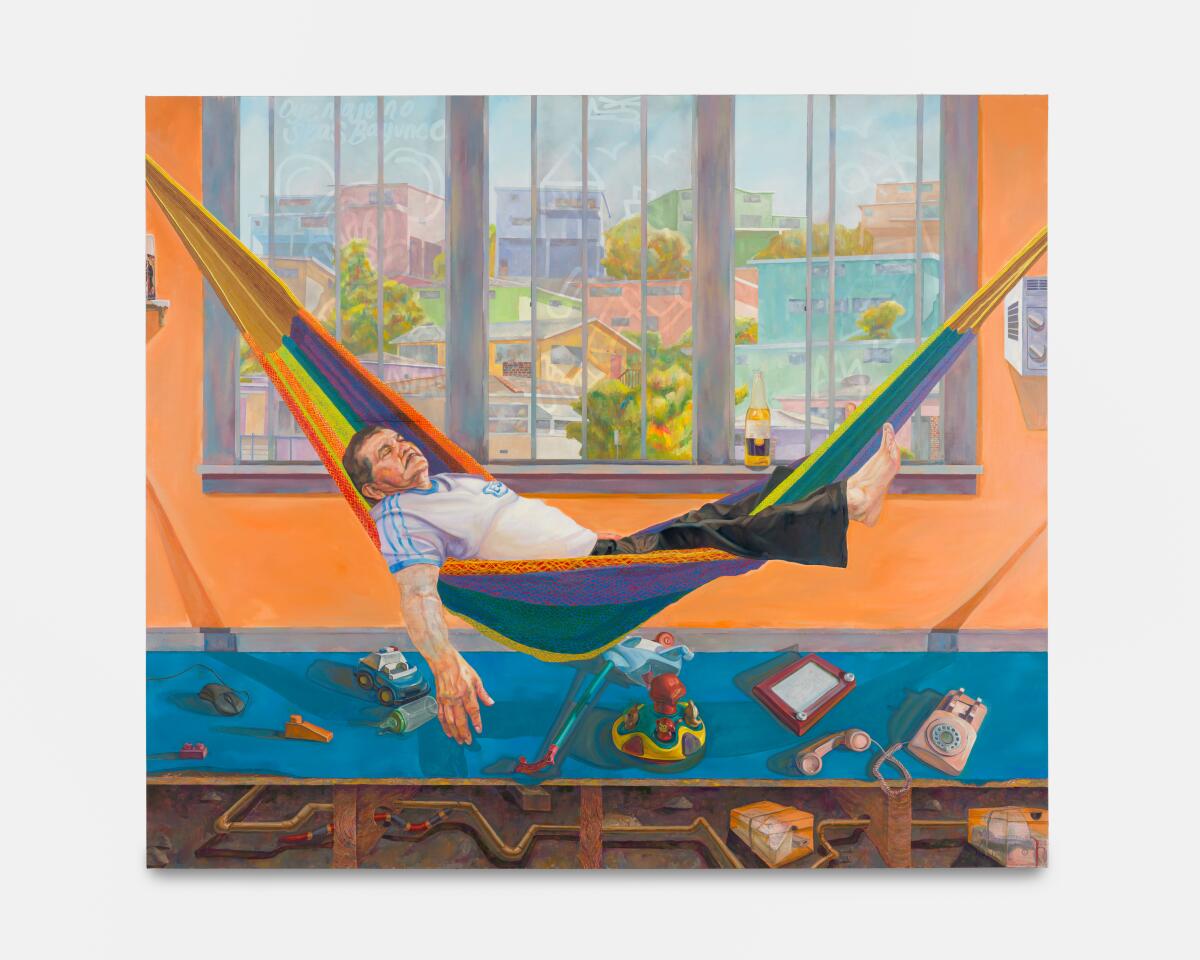
Times columnist Michael Hiltzik has a look at a show of WPA-era paintings at the Oceanside Museum of Art — and notes how many of these creators would likely not be supported by government funds in this day and age. “Clear-eyed, truthful portrayals of American history and contemporary affairs have long been disfavored as beneficiaries of public funding — though the movement to strip them out of classrooms, textbooks and school libraries has seldom been as ferocious as it is currently.”
Classical notes
At the Ford Theatre, composer and choreographer Meredith Monk recently presented an excerpt of “The Games,” an early ‘80s piece that explored the nature of fascism among a crew of survivors of a nuclear holocaust. “The Ford happens to be the most enchanted of L.A.’s major outdoor venues and was beautifully lighted,” writes Times classical music critic Mark Swed. “The super blue moon of the night before retained enough lunar presence to remind us of what is at stake here on an Earth, and how we continually find new ways to jeopardize it. Monk felt startlingly prescient.”
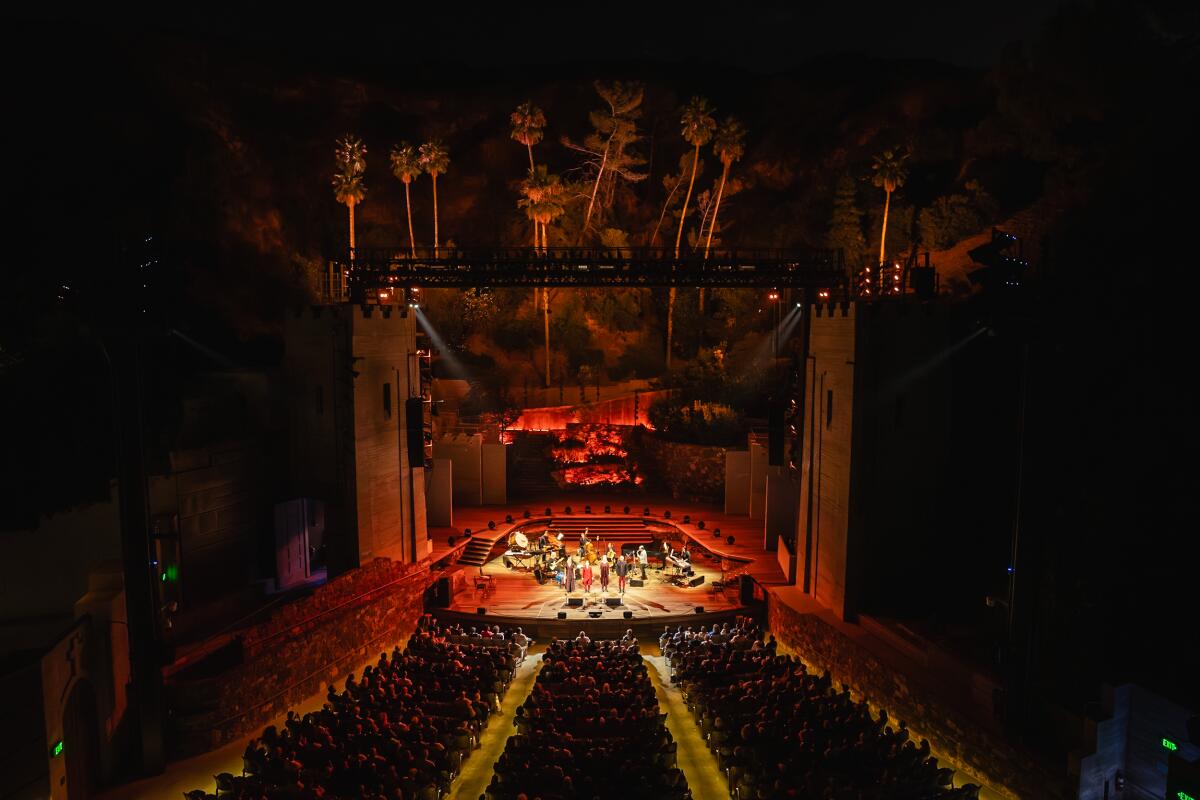
Just dance
It is the 100th anniversary of the Martha Graham Dance Company, the longest-running dance company in the nation. The Times’ Steven Vargas has a look at this momentous commemoration, which will be kicked off by a three-year celebration that starts at the Soraya at Cal State Northridge in the fall. “We couldn’t fit it all into one season,” says Janet Eilber. “The company and Martha Graham’s influence is just so pervasive.”
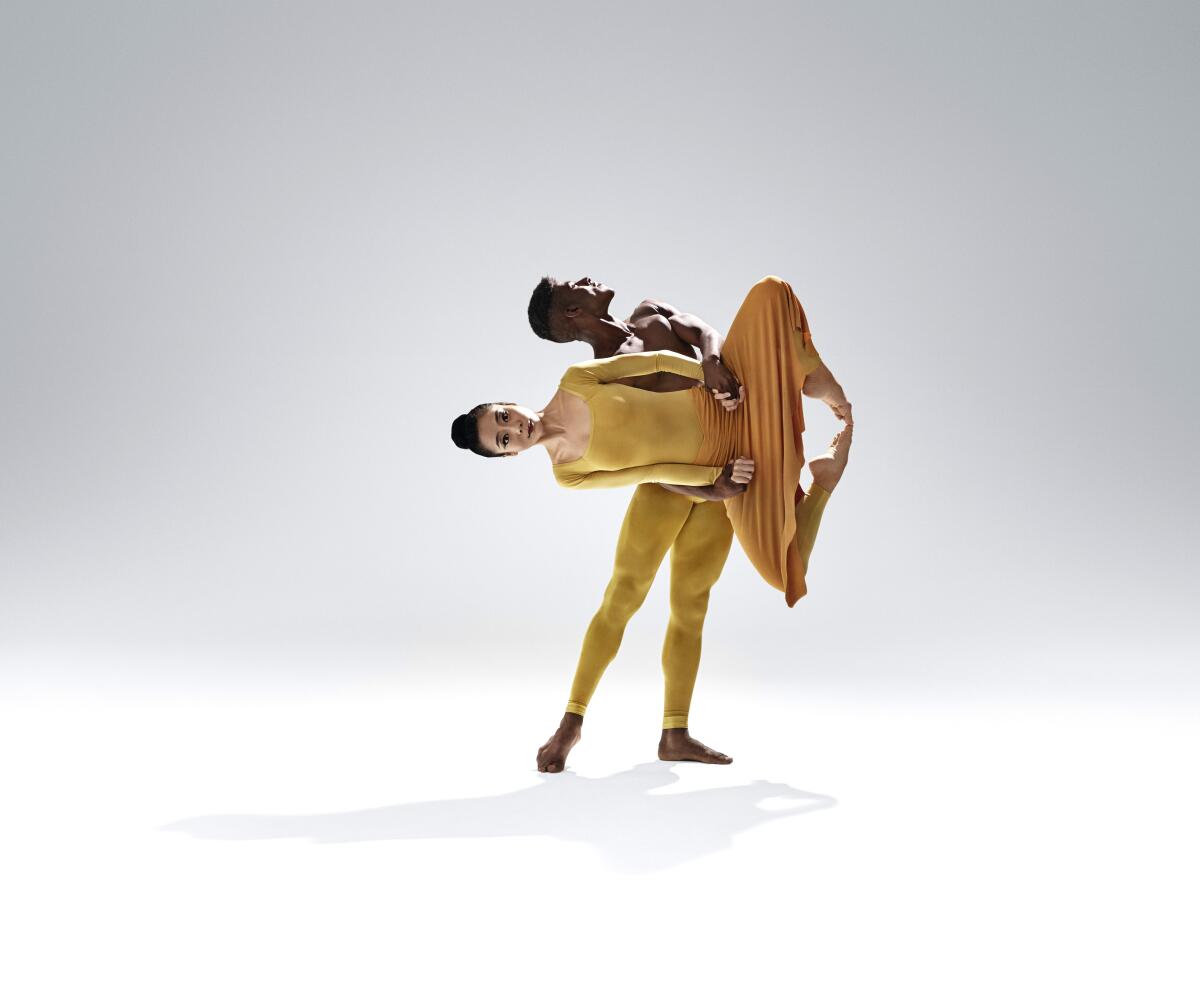
Design time
My colleague Lisa Boone has a look at how one couple expanded their Eagle Rock home and remade a one-car garage into an attractive Spanish Revival ADU with the help of architect Barrett Cooke of Arterberry Cooke.

Essential happenings
In his weekly dispatch on all there is to do in L.A., Steven Vargas rounds up the choices, which include a show by painter Juanita McNeely at James Fuentes Gallery and a reimagining of Sophocles’ “The Gospel at Colonus” at the Getty Villa.
Moves
Kaitlin Garcia-Maestas, curator and director of exhibitions at Socrates Sculpture Park in Long Island City, will serve as co-curator of the 2025 edition of Desert X with artistic director Neville Wakefield.
L.A. County Arts & Culture has announced $1.2 million in grants to 40 different organizations and individuals, including A Noise Within, Heidi Duckler Dance and the Los Angeles Poverty Department.
Culture OC, a new nonprofit website devoted to covering art and culture in Orange County, has launched.
The Langson Institute and Museum of California Art (Langson IMCA) has announced the acquisition of 25 works of art, including pieces by Judy Baca, Kenyatta A.C. Hinkle and Matt Mullican.
The Royal Institute of British Architects has announced the shortlist for the 2023 RIBA Stirling Prize.
Passages
Steve Roden, a multidisciplinary Los Angeles artist whose practice extended from painting to sculpture to sound, has died at the age of 59. In an obituary, Christopher Knight describes Roden as “a quintessential ‘artist’s artist,’ widely admired by his peers.”

Austrian-born composer Walter Arlen, a survivor of Buchenwald who went on to become a music critic at The Times after World War II and later established the music department at Loyola Marymount, is dead at 103. “The music I have written is so heavily influenced by what happened to my family,” Arlen once said, “the tragedies that befell me, the loss of everything in Austria that our family owned, stolen under the Nazis and never returned.”
Gloria Coates, a Wisconsin-born musician who was among the most prolific female composers of the 20th century, has died at 89. “Ms. Coates’s symphonies are dark and sensuous,” wrote critic Kyle Gann in the New York Times of her work, “and distinguished by an imaginative use of orchestral glissandos ... which culminate powerfully in drawn-out crescendos.”
Enjoying this newsletter? Consider subscribing to the Los Angeles Times
Your support helps us deliver the news that matters most. Become a subscriber.
Mandy Einstein, an arts patron who was a longtime supporter of MOCA and other Los Angeles arts institutions, has died at the age of 82 from complications related to pneumonia. Her death was confirmed by a representative for MOCA. She is survived by her husband, Cliff Einstein, as well as two children, Karen and Harold.
Patricia Caulfield, a top editor at Modern Photography who successfully sued Andy Warhol for using a picture she made, has died at 91.
Gallerist Manny Silverman, who ran an eponymous space that became a hub for postwar Abstract Expressionism in the 1980s, has died at 82. Over the years, Silverman showcased works by Philip Guston, Adolph Gottlieb and Joan Mitchell, among other significant painters of the era.
Graffiti artist TEMPT One, born Tony Quan, known for fusing Chinese calligraphic styles with cholo-style lettering, is dead at 54.
Edith Grossman, whose translations of Gabriel García Márquez’s “Love in the Time of Cholera” and Miguel de Cervantes’ “Don Quixote” would help raise the profile of the translator in literature, has died at 87.
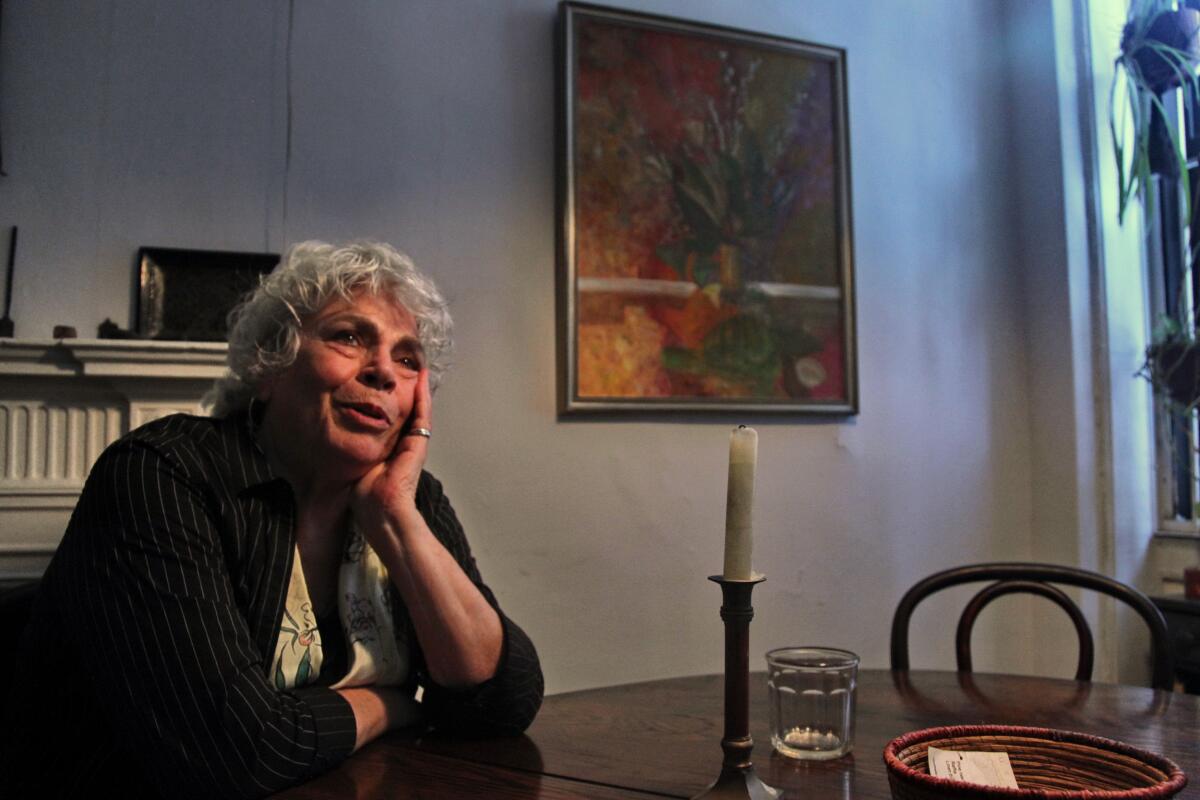
In the news
— How Crocs became cool.
— A history of basketball fashion.
— “Dicks: The Musical” was greeted with “laughs, cheers, audible gasps, shrieks and, yes, a few groans” at the Toronto International Film Festival. There was also a giant inflatable phallus.
— Love this profile of dream hampton in the Atlantic. Makes one pine for the days of a truly robust media landscape.
— Also digging Hadi Moussally’s short film “Sultana’s Reign.”
— As the British Museum is engulfed by controversy over the theft of thousands of objects, the Guardian’s Charlotte Higgins notes that museum staff have been laboring under “endless Tory cuts,” leaving “fewer and fewer curators ... with more and more work to do.”
— Travis Diehl writes about land art that approaches the land with humility.
— The renderings of the California city that tech billionaires want to build in Solano County resemble a Mediterranean margarine ad designed by AI.
And last but not least ...
I recently watched the incredibly enjoyable “Turn Every Page: The Adventures of Robert Caro and Robert Gottlieb” and it made me feel better about writing long. Also, Gottlieb’s collection of plastic handbags was just spectacular — though I never in a million years would want to dust it.
The biggest entertainment stories
Get our big stories about Hollywood, film, television, music, arts, culture and more right in your inbox as soon as they publish.
You may occasionally receive promotional content from the Los Angeles Times.




